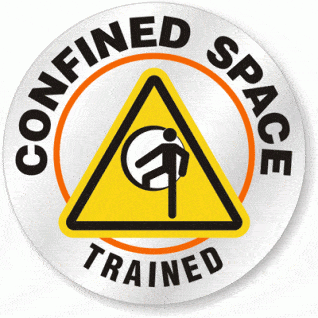Why Confined Space Training is Important

A Look at the Statistics
A study by the National Institute for Occupational Safety and Health (NIOSH) in 2017 found that 2.1 million workers enter permit confined spaces annually. About 60 percent of confined space fatalities are rescuers, and OSHA reported that when multiple deaths occur during a rescue, the majority of the victims are ‘would-be’ rescuers.
Below are some startling findings of the NIOSH investigations of confined space incidents:
- 85% of the time a Supervisor was present.
- 29% of the fatalities were Supervisors.
- 31% had written confined space entry procedures.
- 0% used the written procedures.
- 15% had confined space training
- 0% had a rescue plan.
- 60% of ‘would-be’ rescuers died.
- 95% were authorized by supervision.
- 0% of the spaces were tested prior to entry.
- 0% were ventilated.
Importance of confined space training
To mitigate the high fatality and injury rate, employers have a strong responsibility to ensure that workers are protected even before they enter a confined space. In addition, these employees must all be given the time to understand the work space and its unique challenges. That is why employers prefer to hire workers who have already completed the necessary confined space training or those who can be trained and honed for the job.
An effective program for confined spaces has 3 important elements. Employees should be trained to:
- Recognize a confined space when they see one.
- Remain aware of expectations.
- Recognize hazards.
Besides the apparent dangers involved in the job, trainees will also learn about personal protective equipment (PPE), fall protection, lighting equipment, communication equipment, and entry procedures.
If you’re wondering how you can opt in for this training, the employers are usually the ones who make all the training arrangements prior to the job. Furthermore, new workers who are designated near the workspace in question must also receive training to understand the dangers that comes with the job as well as their personal roles during any case of emergency.
Under normal circumstances, the program will also include re-training on new hazards that are introduced near or within the confined space. Re-training is also necessary if the permit system undergoes changes. In other words, if there is a need to refresh a worker’s knowledge about confined spaces, re-training should never be ignored.
So who needs to be trained and re-trained? Contrary to popular belief not all workers need to be trained for confined space hazards. It is a much better and more cost effective to train those who work inside or near the confined space. However, employers should also realize that ‘affected’ workers (those who work in or near these spaces) should also be aware of the dangers within the area.
Alternatively, as an employee, confined space training programs are also available online. With this, you can easily upskill and learn the basics of confined space entry. Thus, allowing you to acquire the needed credentials for confined space operations.
Who should have confined space training?
Any worker who needs to work in or around confined spaces has to undergo this training. This includes but is not limited to firefighters, emergency response teams, HVAC technicians, pipeline workers, plumbers, welders, and maintenance technicians.
The best way to do that is to sign up for an online confined space training program. You can also keep an eye out for in-person training sessions being offered in your local area; take advantage of them while they’re available. Most courses only take a few hours to complete and will go a long way to keeping you and your team safe on the job.
